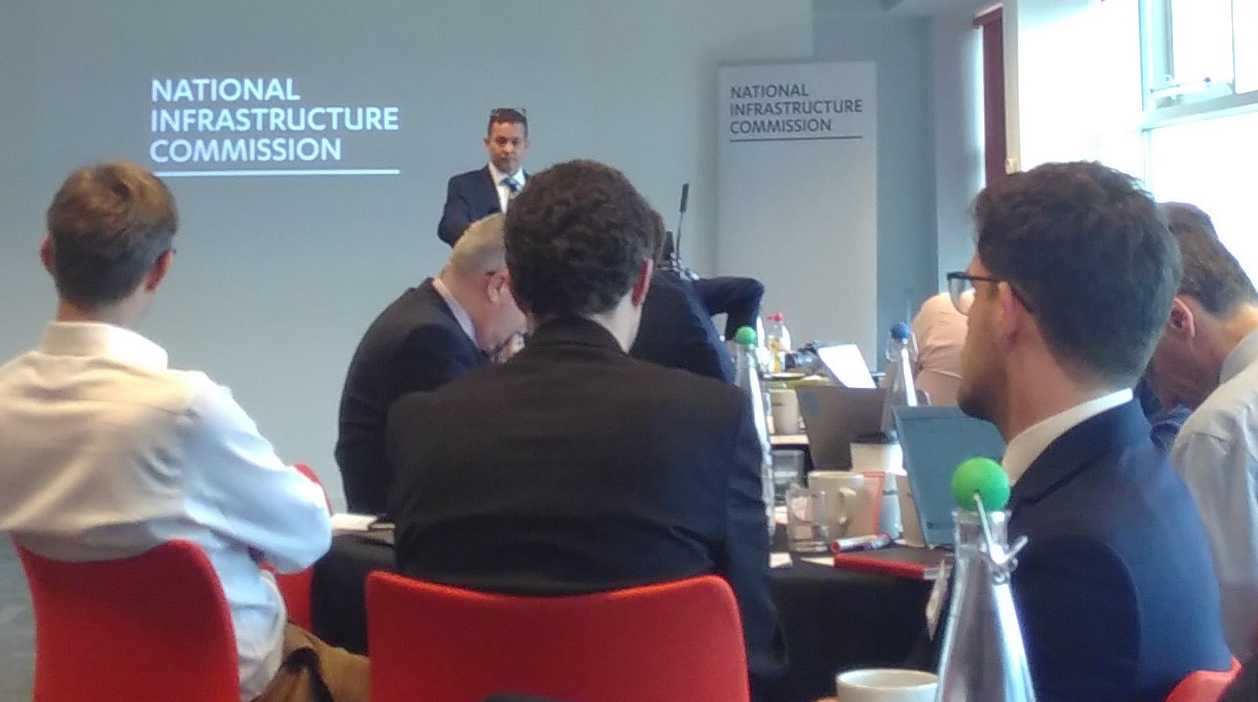How will the National Infrastructure Assessment shape the future of urban transport?
When the National Infrastructure Commission (NIC) was established back in 2015, researchers such as myself took note. This non-ministerial Government department is charged with producing a key document, the National Infrastructure Assessment (NIA). To be published once in every Parliament, the NIA will analyse the UK’s long-term economic infrastructure needs for the next three decades, including transport, and set out recommendations for how these needs should be met.
What’s not to like?
I was therefore delighted to be invited to a recent ‘Future Cities Transport’ workshop, hosted by NIC and the Institute for Transport Studies (ITS Leeds). With topics such as ‘addressing urban transport pressure with a sustainable vision for future mobility in cities’ and ‘how we better integrate transport and housing’ on the agenda, this seemed like my kind of workshop! The aim of the workshop was to test and hone the NIC’s thinking prior to the publication of the NIA this summer. Bringing together national, regional and local policy and decision makers, with academics and Commissioners, the event was a high profile opportunity to hear about the forthcoming assessment and feedback into those plans - with participants asked to respond to questions from the organisers.
So how might the NIA shape the future of urban transport?
We’re unlikely to know until we see the full document later this year, but a number of aspects from the discussions and the presentation of the NIC’s vision for transport were particularly refreshing to hear. Bus was highlighted as a key component of future urban mobility, which is deeply encouraging as this mode of transport is often overlooked. Despite recent rapid declines in patronage, 70% of public transport trips are made by bus – as we outlined in our recent ‘Number Crunch’ report, which explores some of the trends emerging in travel behaviours.
There was a lengthy discussion on what can be done to increase the attractiveness of the bus, with consensus emerging around the need for better integration with other transport modes and improvements in information for users.  Another interesting dimension was the discussion around autonomous vehicles, which – rather unusually given the usual focus around tech - was framed in the context of sustainability. The point was made that autonomous vehicles need to be electric (otherwise we’ll be replacing like for like) and that they should feed passengers into public transport networks rather than replace them. Sensible thinking. Connecting housing and transport is another key aim of the NIC, along with improving wellbeing through high quality placemaking. And it was good to hear that the NIA will be considering the potential interactions between its infrastructure recommendations and housing supply.
Another interesting dimension was the discussion around autonomous vehicles, which – rather unusually given the usual focus around tech - was framed in the context of sustainability. The point was made that autonomous vehicles need to be electric (otherwise we’ll be replacing like for like) and that they should feed passengers into public transport networks rather than replace them. Sensible thinking. Connecting housing and transport is another key aim of the NIC, along with improving wellbeing through high quality placemaking. And it was good to hear that the NIA will be considering the potential interactions between its infrastructure recommendations and housing supply.
These connections are something we at the Urban Transport Group will be taking a closer look at in the coming months, in our forthcoming report about Transit-Oriented Development. There’s undoubtedly further thinking to be done between now and the publication of the NIA, but it should help to set national strategic priorities for government, while ensuring that projects and decisions remain devolved to local and regional governments. And we’ll be on hand to further analyse those transport recommendations once they’re available. Until then, I’ll have to wait patiently.
Clare Linton is a Researcher at the Urban Transport Group

